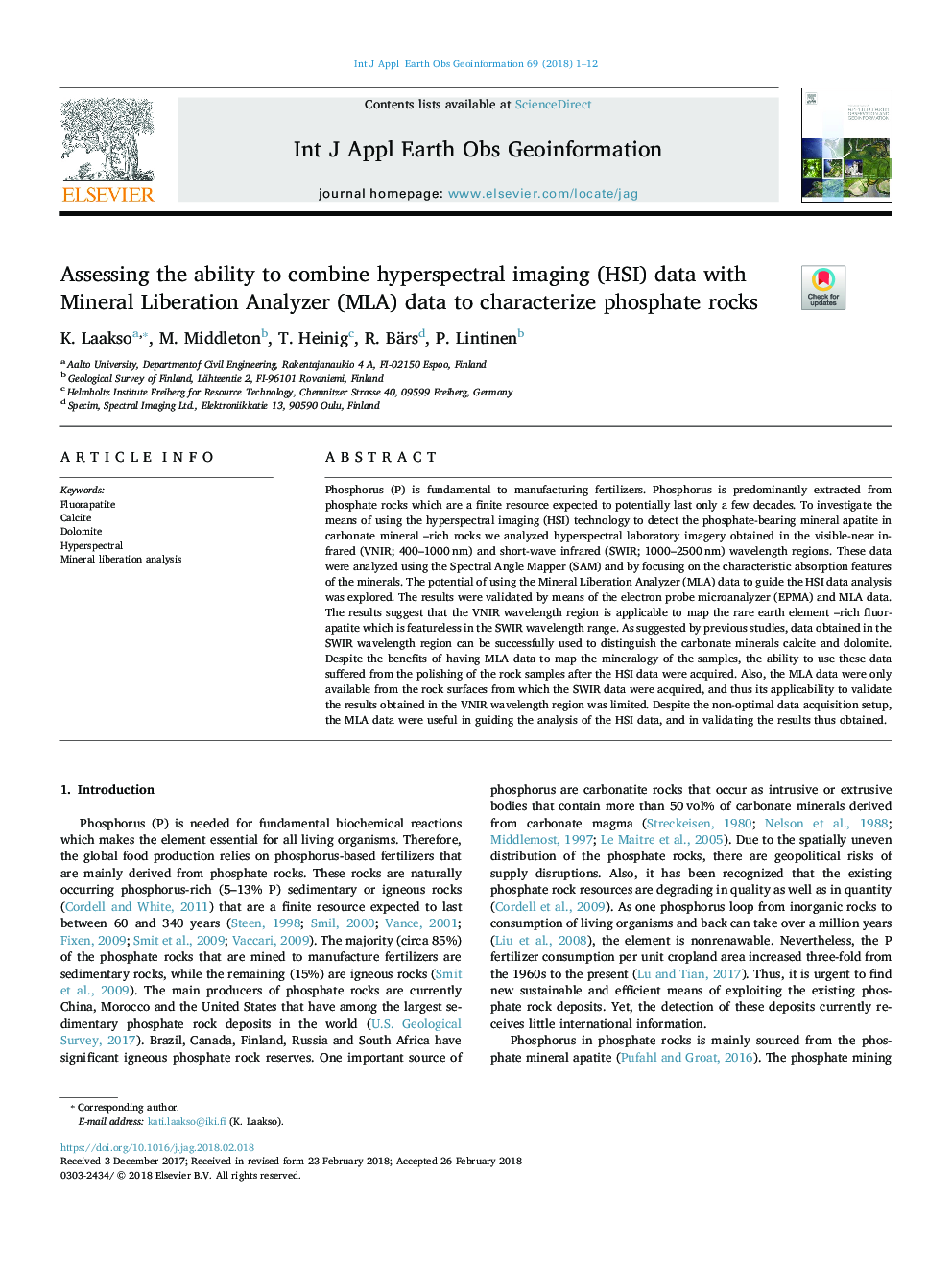| Article ID | Journal | Published Year | Pages | File Type |
|---|---|---|---|---|
| 8867856 | International Journal of Applied Earth Observation and Geoinformation | 2018 | 12 Pages |
Abstract
Phosphorus (P) is fundamental to manufacturing fertilizers. Phosphorus is predominantly extracted from phosphate rocks which are a finite resource expected to potentially last only a few decades. To investigate the means of using the hyperspectral imaging (HSI) technology to detect the phosphate-bearing mineral apatite in carbonate mineral -rich rocks we analyzed hyperspectral laboratory imagery obtained in the visible-near infrared (VNIR; 400-1000â¯nm) and short-wave infrared (SWIR; 1000-2500â¯nm) wavelength regions. These data were analyzed using the Spectral Angle Mapper (SAM) and by focusing on the characteristic absorption features of the minerals. The potential of using the Mineral Liberation Analyzer (MLA) data to guide the HSI data analysis was explored. The results were validated by means of the electron probe microanalyzer (EPMA) and MLA data. The results suggest that the VNIR wavelength region is applicable to map the rare earth element -rich fluorapatite which is featureless in the SWIR wavelength range. As suggested by previous studies, data obtained in the SWIR wavelength region can be successfully used to distinguish the carbonate minerals calcite and dolomite. Despite the benefits of having MLA data to map the mineralogy of the samples, the ability to use these data suffered from the polishing of the rock samples after the HSI data were acquired. Also, the MLA data were only available from the rock surfaces from which the SWIR data were acquired, and thus its applicability to validate the results obtained in the VNIR wavelength region was limited. Despite the non-optimal data acquisition setup, the MLA data were useful in guiding the analysis of the HSI data, and in validating the results thus obtained.
Related Topics
Physical Sciences and Engineering
Earth and Planetary Sciences
Computers in Earth Sciences
Authors
K. Laakso, M. Middleton, T. Heinig, R. Bärs, P. Lintinen,
